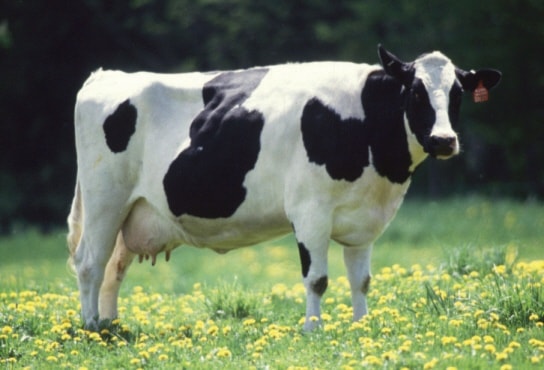Tom Kootstra grew up on the family farm near Pitt Meadows, B.C., and for almost 20 years, he has run a dairy operation in the Ponoka area.
And even as the number of dairy farms in Alberta continues to shrink, Kootstra is confident about the future of the business — partly because he knows his family will be a part of it.
“Two of my three sons are engaged in the farm here with us,” Kootstra, who serves as board chairman for Alberta Milk, told the Independent.
Of the 11 members of the Alberta Milk board, he said, 10 of them have children who have committed themselves to a future in the dairy industry.
“There is definitely a sense of optimism,” he said. “If you work hard and use the equity in the farm . . . there is an opportunity.”
Karlee Conway, who serves as corporate communications co-ordinator for Alberta Milk, said there is a sense of confidence in the industry about the future.
“I think we’ve got a really strong next generation coming into the dairy industry in Alberta,” she said, explaining that younger farmers are highly engaged, communicating via social media and attending meetings.
She also said that supply management policies in place in Canada help to ensure a stable future for the industry and prevent price fluctuations for dairy products.
Conway reported that there are about 550 dairy farms in Alberta — all of them family-owned and operated — though the count has continued to shrink.
She explained that as farmers adopt “smarter” practices, they become more efficient, so production levels remain roughly the same even as the number of farms declines, a trend seen across the country.
Conway said there are several reasons for the decline, some as simple as the required investment of time. Dairy farmers must milk their cows twice a day, every day of the year, and that’s more of a time commitment than many people are willing to make.
“It’s not without its challenges,” she said. “I think it’s more labour-intensive than, possibly, some other farming industries. . . Sometimes it’s not as attractive to stay in the industry.”
Conway said one unique element of the Alberta dairy industry is the high percentage of farms based on Hutterite colonies, which produce 26 per cent of the province’s total dairy output.
“They are big contributors to our industry,” she said, adding that colony-based farms have won the provincial milk quality award for five out of the last seven years.
Looking toward the future, challenges for the industry will include maintaining strong relations with dairy processors and ensuring “everybody at the table is satisfied,” Conway said.
In July of 2013, the Dairy Farmers of Canada adopted the proAction initiative, which involves programs targeting six key areas: milk quality, food safety, animal care, livestock traceability, biosecurity and the environment.
Conway said the initiative is designed to strengthen public trust in the industry by providing tangible evidence of farmers’ efforts to maintain the quality of their products and serve as stewards of the environment.
Kootstra said that the Alberta Milk organization will continue to promote supply management practices.
“I think there’s some concern with our government as it continues to negotiate with (Trans-Pacific Partnership) partners,” he said, adding that allowing foreign producers access into the Canadian market would damage the dairy industry.
He also observed that online activists concerned about animal welfare have contributed to a lot of “media noise,” some of it targeted at dairy farming.
Kootstra said he’s particularly annoyed by celebrities who have taken up the cause of environmentalism but seem to have little connection to the land themselves.
“Most of them probably couldn’t grow a potato or milk a cow to feed themselves,” he said, arguing that most farmers demonstrate respect for their animals and for the natural environment.
“You can’t continue to farm if you don’t respect the land,” he said. “I think a farmer, by definition, is an environmentalist.”
For more information on dairy farming in Alberta, visit www.albertamilk.com.
